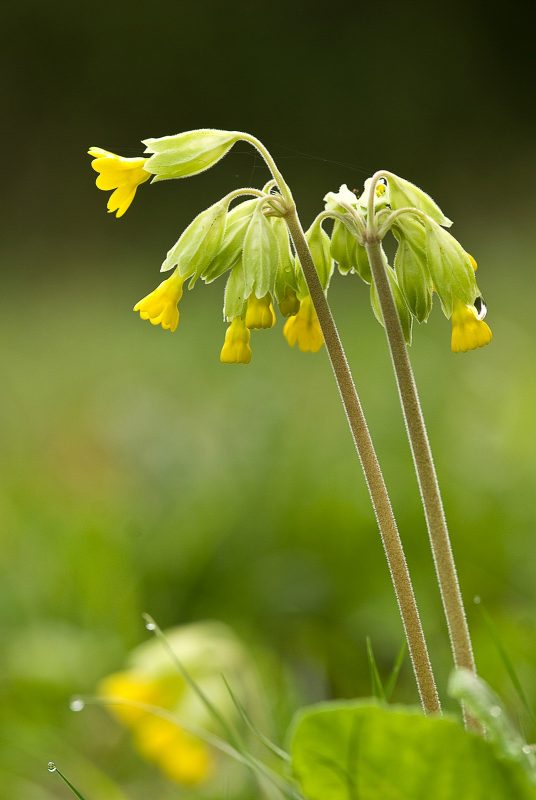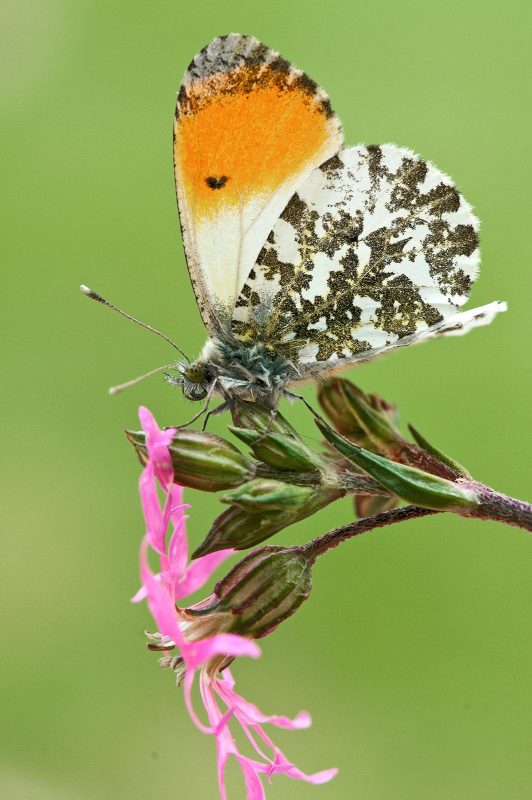Ideas for Garden Nature and Wildlife Photography

It’s hard to believe where we are now. Last week I was photographing leopards and cheetahs in the Masai Mara in Kenya before rushing out the country, running the gauntlet of a crowded aircraft, several airports, and lack of screening, to get home before all borders closed. Now here we are – spring in the time of a global lockdown!
Generally, the overall scene feels like something from a science fiction film and, speaking to many people over social media, there seems to be a general high level of stress, uncertainty, shock and even a lack of motivation. While these things are perfectly understandable, with this article I seek to motivate people to try to practise and hone their skills as photographers within the very limited space of their home and garden.


Personally, I am under self-isolation at home and, admittedly for me, there are worse places to be: I live at the foot of the South Downs in West Sussex and have worked hard over the last few years to hopefully produce a flourishing wildlife garden. Additionally, despite the bleakness of the human situation, the world rolls on for all other species and although life-cycles progress inexorably throughout the year, on a positive note, it is springtime here in the northern hemisphere.
In the past, it has almost been with a sense of panic that I can’t keep up with all the changes during the spring explosion. I get that sensation that the natural world is going crazy – blink and you’ll miss it! So, currently being limited to my garden, my circle of vision and influence is much reduced and I’m happily restricted to documenting the smaller things around me.
With this in mind, however, I would stress that I attach as much value and effort to photographing a flower in the garden as I do to a leopard in Africa; my role as a photographer is to photograph things, hopefully beautifully, irrespective of their rarity or perceived beauty. In this way, I am honing generic wildlife photography and even fieldcraft skills that I can carry on to more dramatic subjects in the future.
Let’s take a look at some ideas for garden nature and wildlife photography.
Flora
If you have a garden, at this time of year you probably have flowers emerging. Be these wildflowers, or the garden variety, the advantage of focusing on flora as a subject is that they do not run away or fly away. This will give you plenty of time to practise your craft from manual exposure, to background control, and understanding the light.
Breaking the construction of the image down, with flowers, people are often surprised by the lens choice I make – although a flower is going nowhere, my lens choice is dictated by the image rather than the fact that I can just go right up to it. Consequently, I very often use 300 mm or more as a focal length based on a full frame sensor.
Longer focal lengths give several advantages: a narrow field of view means I can pinpoint my background, and any hotspots or distractions can merely be eliminated by moving the camera an inch or two to the left or right.
Read more: Ideas for Photographing Wildflowers
Close focusing with a longer focal length lens gives me a shallower depth of field, meaning I can choose my aperture simply for the subject; I combine this with background distancing. So, I will shoot with my background as far away from my foreground subject as possible, as throwing it out of focus does not necessarily mean decluttering it. A longer lens also creates the foreshortening effect, or compression, which slams the background behind the foreground, giving a more dramatic look to your image.
Insects
Planting nectar plants or meadow areas, which can easily be done very cheaply and needs no enrichment of soil, will bring in many insects including butterflies, moths, bees, and I am even lucky enough to have glow-worms in my garden in June and July.
Flowers in pots can even be moved, or rotated, to better sites as the day progresses, both to attract more insects as well as placement for better photography. Photographing insects in your garden will teach you a lot about fieldcraft and how to get close enough.
Birds
Generally, you can attract birds in two ways to your garden: either by feeding, especially during the winter months, or by supplying a suitable habitat to nest, or habitat to bathe or drink, such as a garden pond.
Obviously photographing birds on feeders is pretty dull, so this is potentially a great opportunity to learn the craft of bait-and-perch – the method of placing a perch on the approach route to a reward so you can get more naturalistic shots.
An easy set-up for great-spotted woodpeckers, is simply to sink a log into the ground and bore holes into the side. Press lard into these holes and, if you have woodpeckers in your area, sooner or later they will start feeding on your logs. Please don’t drill holes into living trees though. Bore the holes just in the side profile of the log, so they are not visible in the image.
Read more: How to Set Up a Feeding Station for Wildlife
Also, try not to just photograph birds from your kitchen window. Use a hide, build one, or even adapt a shed doorway to increase your opportunities, with consideration to the light, background, and all the elements that can turn an average shot into something special.
My very first hide was a simple canvas sheet with a hole cut into it suspended between two branches outside a blue tit nest.
Read more: What’s the Best Portable Wildlife Photography Hide?
Pondlife
If you create a wildlife pond in your garden, then time laying next to it through the spring, summer, and autumn can reap great rewards: amphibians, reptiles, flowers, insects, and even birds bathing and drinking.
Garden ponds are probably the single most radical change you can make to a garden to make it wildlife friendly. I dug mine and ramped up the soil so that the water surface is level with my desk – kind of distracting when working from home!
The images of the frog and toad are very similar to the images I have subsequently taken of crocodiles, alligators, and snakes – generic skills to transfer.
But as a focus for all areas of wildlife and nature photography, the garden pond will certainly also become your focus and it will change dramatically throughout the year, affording more and more opportunities.
Read more: How to Build a Bird Reflection Pool
Macro photography
You don’t need to travel far to get into the macro world, or I should say close-up world, as a lot of stunning images can be created using something like a cheap 300mm zoom that can focus closely – although technically not a 1:1 representation macro image.
You do not need to splash out on a macro lens to enter this world. The pond will provide great subjects or just objects from the garden and used in a daylight studio. Leaves taped to a window make for great shots with the light from behind.
Also take a look at the NiSi Close-up filter, which turns a regular lens into a true macro and helps you to do things on a budget.
Read more: How to Take Macro Photos on a Budget
General considerations
Get low and level with your subject – I cannot stress this enough; if you point down at your subject such as a flower at 45° or thereabouts, you will have the most boring viewpoint on your flower and your background is just a few centimetres away.
Get the camera off the tripod and onto a beanbag and shoot along the ground – you’ll immediately notice the difference. This general viewpoint on low-level flora will immediately distance your background, focusing the eye of your viewer on the very subject itself.
You are now directing your image and using techniques to steer your viewer’s attention. This technique is common in most of my photography, and another transferrable skill to be used once you are roaming freely again.
Narrow your horizons
Depending on the size of your garden and how established it is, compared to the wider countryside, initially it can seem a little uninspiring. But let’s face it, you’re stuck so you may as well find something. This is potentially what being a photographer is – creating something out of apparently nothing.
So, maybe try to stick with one subject, even one lens to avoid “lens dilemma,” and then you’ll probably find your circle of vision reduces and you start finding other subjects within metres of you.
Use support
Even though a subject may be immobile, I invariably always use support – normally in the form of a tripod or a bean-bag. I have been told that I possibly bang-on too much about using a tripod, but I will be totally frank here: I use a tripod for around 95 percent of my shots. I use a bean-bag or other support, such as a rolled up fleece, for 4 percent, and no support for 1 percent. This allows me to drop my ISO for a cleaner, noiseless image. It also allows me the time to compose the image in a more relaxed fashion. Despite advances in ISO technology, your shots will be sharper and better composed if you use support.
In conclusion
If you are taking the lockdown seriously, and I think we owe it to both health workers and vulnerable members of the population to do so, then we are stuck at home. Practising your photography at home can help us as individuals to get through the boredom. However, I can almost guarantee that you might change your garden as a result of this.
Hopefully, more ponds will be dug and wildflowers planted, turning a large area of our land surface into a more wildlife friendly place and, in turn, allow you to set up more ambitious projects in the future.
I look back at my formative years in the late 80s and early 90s when I learned my craft, kneeling in the leaf litter of local woodland simply photographing flora. At this time I was using an Olympus OM 10 film SLR with a couple of cheap used lenses which I bought in a sale in Tottenham Court Road – I think for £10 and £15 apiece. I had not the money nor equipment to take on more challenging subjects.
Similarly, developing small projects in your garden, which is in effect mimicking a woodland clearing, with plenty of time on your hands to experiment and even make mistakes will teach you a huge amount and may have as profound an effect as it had on me, as it was this time with a limit on equipment and only travelling a small distance that hooked me.
“This is what I want to do,” I told myself. That was when I decided I wanted to become a professional wildlife photographer. Little did I know what a rocky, yet beautiful, road it was to become.
Good luck and stay well in this unfortunate time.















